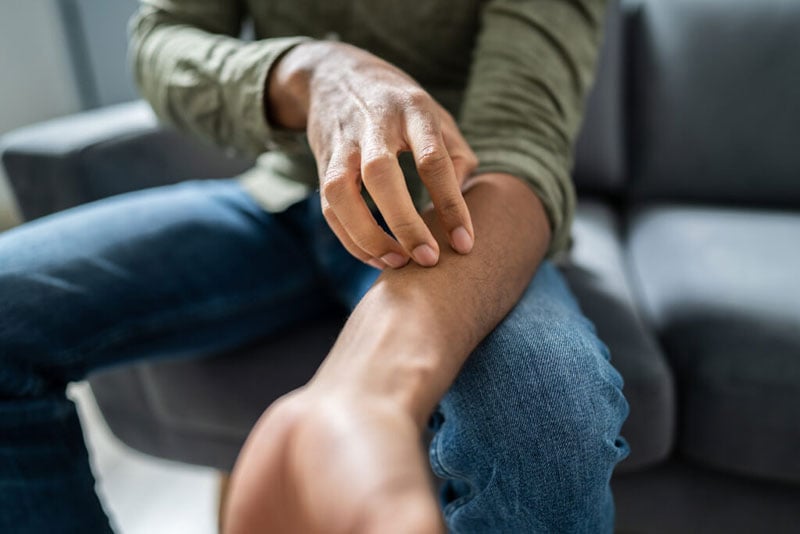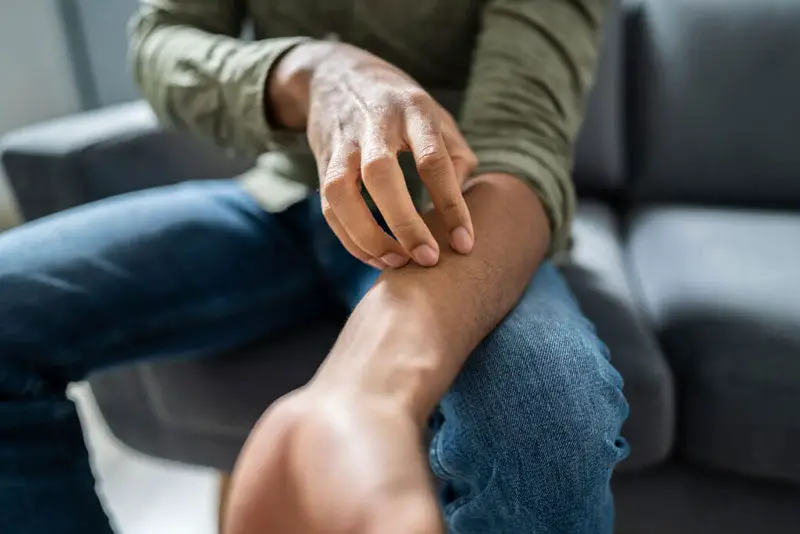Summer Care for KP on Buttocks: Beautician's Guide
As a beauty professional, you likely encounter clients seeking methods to address various skin concerns, including Keratosis Pilaris (KP). This prevalent skin condition is marked by small, bumpy areas that often appear on the buttocks, arms, and thighs. These bumps form due to a buildup of keratin, a protective protein that, when trapped, clogs hair follicles and causes rough patches.
In the warmer months, with more skin exposed, the need for KP treatment tends to rise. This article will explore effective summertime care strategies for managing KP on the buttocks, helping your clients feel assured and at ease in their skin.

Importance of Summer Care for KP on Buttocks
The summer heat and humidity can intensify KP symptoms, causing the skin to appear redder and feel coarser. Additionally, sweat and friction from clothing can further aggravate the condition. By understanding the critical aspects of summer care for KP on the buttocks, you can offer personalized advice and treatments to your clients.
Furthermore, summer is a time when many wish to wear swimsuits or shorts, making visible KP a source of self-consciousness. With your expert guidance and solutions, you can enable your clients to enjoy the season without worry about their skin.
Effective Treatments and Solutions
Gentle Exfoliation
Exfoliation is vital in managing KP, as it aids in removing dead skin cells and preventing keratin buildup. However, during the summer, it's essential to choose gentle exfoliants to avoid irritating the skin. Recommend products that contain alpha hydroxy acids (AHAs) or beta hydroxy acids (BHAs), such as salicylic acid, that are both effective and gentle. Advise your clients to exfoliate two to three times weekly for the best outcomes. You might also suggest reading our article on safe exfoliation.
Moisturization is Essential
Keeping the skin well-moisturized is crucial in managing KP. Recommend creams or lotions that feature urea, lactic acid, or ceramides, which help soften keratin plugs and enhance skin texture. Encourage your clients to apply moisturizer right after showering to seal in moisture.
Sun Protection
Sun exposure may worsen KP symptoms and lead to hyperpigmentation. Advise your clients to apply a broad-spectrum sunscreen with an SPF of at least 30 on their buttocks before sun exposure. Remind them to reapply sunscreen every two hours, especially after swimming or sweating.
Lifestyle and Home Remedies
Appropriate Clothing Choices
This summer, recommend that your clients choose loose, breathable fabrics that allow the skin to air out and reduce friction. Fabrics like cotton and linen work well. It's best to avoid tight clothing that may rub against the skin and exacerbate KP symptoms. For more insights, refer to our article on tight clothing and KP.
Staying Hydrated
Hydration plays an important role in skin health. Urge your clients to drink plenty of water daily to keep their skin hydrated from the inside out. Adequate hydration can also alleviate the severity of KP.
Diet and Nutrition
A diet abundant in omega-3 fatty acids, along with vitamins A, D, and E, supports skin health and may help decrease KP symptoms. Recommend foods such as salmon, walnuts, and leafy greens as part of a balanced diet.
Professional Treatments
For clients looking for more intensive approaches, suggest professional treatments like chemical peels or laser therapies. These options can significantly diminish the appearance of KP by removing the outer skin layer or targeting hair follicles. Always advise your clients to speak with a dermatologist prior to undergoing any professional treatments.
Resources for Further Reading
For deeper insights into KP management, you may refer your clients to trustworthy sources such as NHS or SkinSight. These resources provide extensive knowledge on the condition and available management options.
Conclusion
Summer care for KP on the buttocks demands a blend of gentle skincare methodologies, lifestyle modifications, and professional insight. Your expertise in these areas empowers clients to manage their KP efficiently and enjoy summer with confidence. Remember, consistency is essential; with the right practices, your clients can achieve smoother, healthier skin.

FAQ
What's the best moisturizer for KP?
Opt for moisturizers containing urea, lactic acid, or ceramides to help effectively manage KP.
Can diet influence KP symptoms?
Yes, consuming a diet rich in omega-3 fatty acids and vitamins A, D, and E can promote skin health and potentially diminish KP symptoms.
Is exposure to the sun harmful for KP?
Sun exposure can aggravate KP symptoms and result in hyperpigmentation. It's crucial to apply broad-spectrum sunscreen for skin protection.

